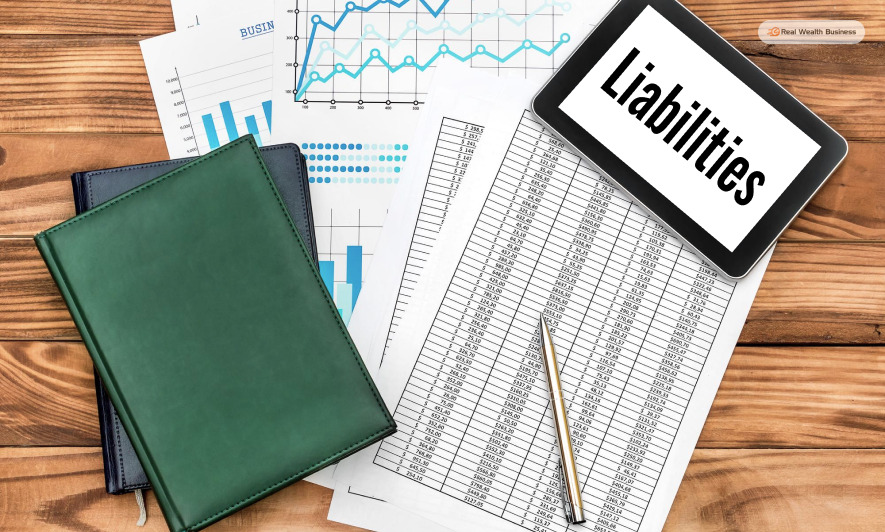Liabilities Definition: What Are Liabilities & What Are The Different Types Of Liabilities?
by Shahnawaz Alam Finance 15 September 2023

When a person or a business or any organization or similar entity borrows something from an organization/an individual, they are liable to return it. This common accounting term deals with debts.
One can explain liability as a small debt owed to a friend or a multi-billion-dollar debt related to some of the largest organizations in the world. Usually, in the business world, liabilities are essential factors for a business.
Go through this article to understand more about liabilities.
Liabilities Definitions: What Are Liabilities?
Liabilities are debts (usually financial) or obligations people must fulfill. Living life comes with many liabilities, and financial debts are the major ones. Most people have to deal with financial liabilities. In corporate finance, liabilities or debts are similar. But they are on a much larger scale.
Liabilities mostly deal with a business’s long-term loans that it owes to financial institutions. Running a business requires accumulating funding, and one of the ways of gathering funds is through loans, which cause financial liabilities on a business’ part.
Who is a liability concern? Well, a liability concerns two parties – a lender and a borrower. In the corporate world, liabilities related to loans can be between a business and a bank. A business owing money to its vendors or their suppliers is also a form of liability. Liability can also be related to lease and warehouse spaces.
In more mechanical terms, liabilities definition stands for – a metric that shows insight into a business’s financial standing and financial health data. Liability implies that an organization has to write off a specific amount of benefit to another financial entity at a specific time in the future.
Who Deals With Liabilities?

Liabilities are one of the core parts of a business. It can determine the approach and action a business takes to manage its financial health. But who does it involve? As said earlier, a liability in the corporate world concerns a business owner or the members of a financial team associated with the liabilities of a company.
The organization’s liabilities affect the organization as a whole in the long term. That is why an organization needs financial experts and accountants working to understand how their debts affect the organization.
They have to work with different accounting processes that help them understand how liabilities, equities, and assets work with each other. It can affect a business’s profitability and overall financial performance.
Liabilities play a big role in corporate finances (private equity, investment banking). Professionals in these professional settings have to understand the role of liabilities in the financial structures of a company.
Different Types Of Liabilities
Now that you understand liabilities definitions, let’s explore the different types of liabilities that concern a business or a financial entity. Liabilities have different types, with the expiration or their due date as their basis for differentiation. There are –
- Current liabilities
- Noncurrent liabilities
- Contingent liabilities
Although all types of liabilities have similar levels of importance, some might require immediate attention while others might not.
Current Liabilities
Current liabilities are related to short-term debts and financial obligations. These liabilities or debts need attention within a year or less. Here are some common examples of what might be considered a short-term liability.
Accounts payable
Accounts payable liabilities include the amount a borrower owes to a lender, customers, or their clients and suppliers.
Short term loans
Short-term loans with repayment periods below one year or less than a year are also current liabilities.
Payment on long-term loans
Due payments on loans with larger amounts that have a repayment period of more than a year are also current liabilities. In this case, the remainder of the loan stays listed as a noncurrent liability.
Unpaid interests
Unpaid interests are also under current liabilities.
Underpaid federal local
Unpaid federal, local, and state income taxes also come under short-term liabilities or current liabilities.
Accrued liabilities
Any unpaid short-term loans from the previous accounting period also count as current liabilities.
Deferred Revenue
Companies receive for goods or any service that they have yet to pay are also current taxes.
Commercial Paper
Unsecured promissory notes with fixed interest rates used by companies for paying off immediate liabilities like payroll are also current liabilities.
Noncurrent Liabilities
Long-term liabilities that are due in the distant future (not in the next year.) Here are some examples of noncurrent liabilities in the business world –
Bonds
Bonds are a specific type of marketable security with a maturity date and an interest rate.
Deferred tax
Federal, local, and state taxes that an individual or an entity owes (which are not due immediately) are also noncurrent liabilities.
Long-Term Debt
Loans and different debts that are not due in the next year, which also include the rest of the principal amounts on loans that are paid in increments.
Mortgages
Agreements with the lenders, which allow the lenders to possess the purchased property if the loan remains unpaid, are also noncurrent loans.
Pensions
Employees’ retirement funds also come under noncurrent liabilities.
Leases
Due payments for leased properties such as machinery, office workspace, or vehicles are also noncurrent liabilities.
Contingent Liabilities
Contingent liabilities are totally different from the two types of liabilities already discussed. These liabilities are related to certain contingent events. One of the most common examples of contingent liabilities is costs and expenditures related to any lawsuit.
In this case, if a company wins the case, they do not have to cover any debts. However, if it is the other way around, they have to pay for the lawsuit.
Warranty for products or services a company provides also comes under contingent liabilities. In this case, the company must have the funds to repair or replace the product or services under question by their clients.
It is not possible to plan for all the contingent events. However, during a company’s financial planning, some of the liabilities need to be reported. According to GAAP, accountants have to list probable liabilities on a company’s balance sheet. So, contingent liabilities are important.
Final Words
So, that wraps up the liabilities definition you were looking for. This article should help you whether you are an accounting student or trying to learn about these topics. They are an important part of a company’s finances and business decisions.
Hopefully, this article provided you with the information you were looking for. However, if you have anything to contribute to this topic, you can let us know through the comment section.
Read Also:







































































































